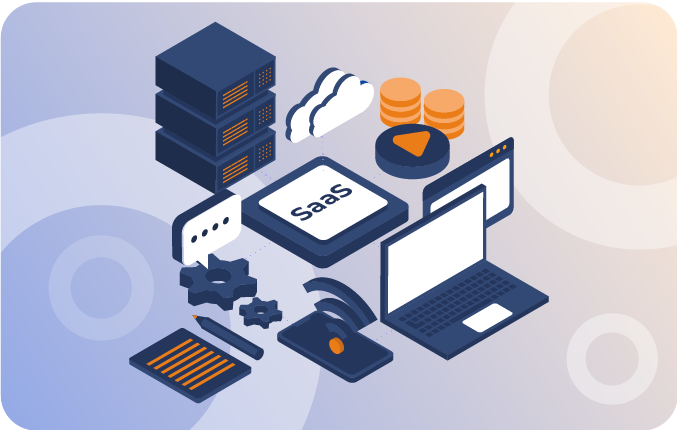Not all payments are equal
Has your payments strategy resulted in “hockey stick” growth in your valuation yet? You know the shape.
If you never got past that inflection point with your payments offerings, you are not alone.
At Handpoint, we’ve helped over 100 software platforms on 3 continents transform to higher growth with embedded payments. Along the way, we’ve learned that adding an isolated payments feature isn't going to be that "one thing" that redefines the trajectory you are on. It is ALWAYS your Payments Strategy that dictates the outcome of your payments investments.
What do we mean by “payments strategy”? And, where do you get started? Learn more below about the 4 main SaaS payments strategies, and which one of them, done right, can hockey stick your valuation.
Why do SaaS companies need a payments strategy?
Recently, Jason Lemkin (founder of SaaStr) reminded us that nearly every North American VC has advised their SaaS portfolio companies to take on some kind of payments or fintech. (European VCs should pay attention to this!). These VCs had seen vertical-specific SaaS leaders take on payments and really transform their growth, revenues, and valuations. Consider the success of Toast, Shopify, and Fresha, for example.
IIf you have offered payments acceptance through your platform, did you see transformational increases in your growth, revenues, and valuation? Or did you get an occasional check for a little extra coffee for the team?
Not every payments strategy has the potential to deliver transformational growth. Which ones can? Though every company is different, you can bucket the most common SaaS payments strategies. The payments strategies for SaaS are often thought of as an evolution. See this great write-up from Flagship Advisory Partners.
There are 3 payments strategies B2B SaaS platforms can follow to see incremental changes in value creation:
1. Stripe Connect: This is a good “get-started-fast” approach for enabling payments acceptance on your platform. You’ll grow because integrated payments acceptance is a great feature, and you won’t have to invest much because Stripe APIs are really easy to work with. The downside is that it is hard to monetize significantly and generally one-size-fits all. The options for face-to-face payments are really limited. And you’ll have a hard time getting support. Somewhere along the way, a traditional acquirer will contact you and make you a promise. Or your new salesperson will find a merchant that will only work with you if you have an integration with their specific processor. So, you become….
2. Opportunistic: You integrate to multiple acquirers to try to eliminate hurdles to winning any possible merchant. Add Barclaycard. Add Worldpay. Add Global. Add Elavon. They will offer you a revsplit and to help underwrite the merchants that you refer. Some of those acquirers will even promise you leads (which doesn’t happen). Instead, you will send merchants to them. However, rather than charge more for your valuable integrated payments, they will bid each other down on their commoditized offerings. Even with your revsplit, you will get a few bucks per merchant per month. You probably don’t even know exactly why you get the amount that you get, though all cash is nice. After a couple of years, you will end up with development chaos, integrations you maintain for minimal incremental ROI, lots of onboarding and support processes and portals to stay on top of, with an onboarding journey that can be described as “Dear Customer - You figure it out.” When it comes to scaling your business, your payments strategy might turn into an enemy, rather than a transformational strength. Then you see ePOSNow or someone else put payments in their name! So you try to go…
3. Branded: You start to understand that your customers choose your SaaS platform to run their business first, and THEN the payments. Not the other way around. You realize that perhaps you can win more SaaS customers if the onboarding process didn’t involve third party processes. So you create another website with some payments offering on it, and you maybe tie it to your brand. This is absolutely a step in the right direction, but still really focused on SaaS growth.
Sound familiar? Many SaaS companies have taken these incremental steps. They have gotten so frustrated by limitations in one phase that they start to search for something more. The incremental slog is slow and frustrating for all those involved - investors, executives, employees, and customers. They burn through precious runway on the way.
But this incremental journey is not actually a requirement. Often, SaaS companies have taken these incremental steps because that next step forward is the only one they can see at the time.
They just don’t know that there is another option. They haven't yet understood that changing their strategy to an embedded payments strategy is a “thing of beauty."
A Powered by Payments strategy has the potential to multiply your valuation:
4. Powered by Payments: Seize the ability to maximize total revenue, not just SaaS revenues, with a SaaS+Payments pricing strategy. Dictate the solution, including the payments path. Price in a way that wins more end users: for example, free software with included payments or a single unified bill. Create a single onboarding journey that increases adoption and streamlines setup costs. Leverage data visibility enjoyed by a SaaS platform to take on a higher share of payments risk and support. Manage payouts for new revenue models. Increase reach, grow revenues, earn cash to fund growth, satisfaction that reduces churn.
To be “Powered by Payments” doesn’t mean you must become a payments company. It can make good sense to leverage capabilities from innovative providers, if they can give you the control you need. In fact, doing so might let you leapfrog a few years of lost time and development chaos and get to growth faster, without having to be ready to get through a European Financial Institution license. But you do have the option to change your business model when you are ready. And knowing that option even exists for you helps make it easier to build your best strategy forward, from wherever you are starting.
Payments strategy for customer-centric companies
Here’s the truth: having a rock solid payments strategy for your SaaS business can make you the “apple of the eye” for both customers and investors. Being “Powered by Payments” is getting in the driver’s seat of your ROI while maintaining a happy and long-term relationship in which your customers are satisfied, and you are a step ahead of the competition. And that’s what Handpoint can help you achieve. To get started on the path toward “hockey-stick” growth and learn how partnering with Handpoint can help you transform with payments, schedule a SaaS Growth Strategy Session with us.






